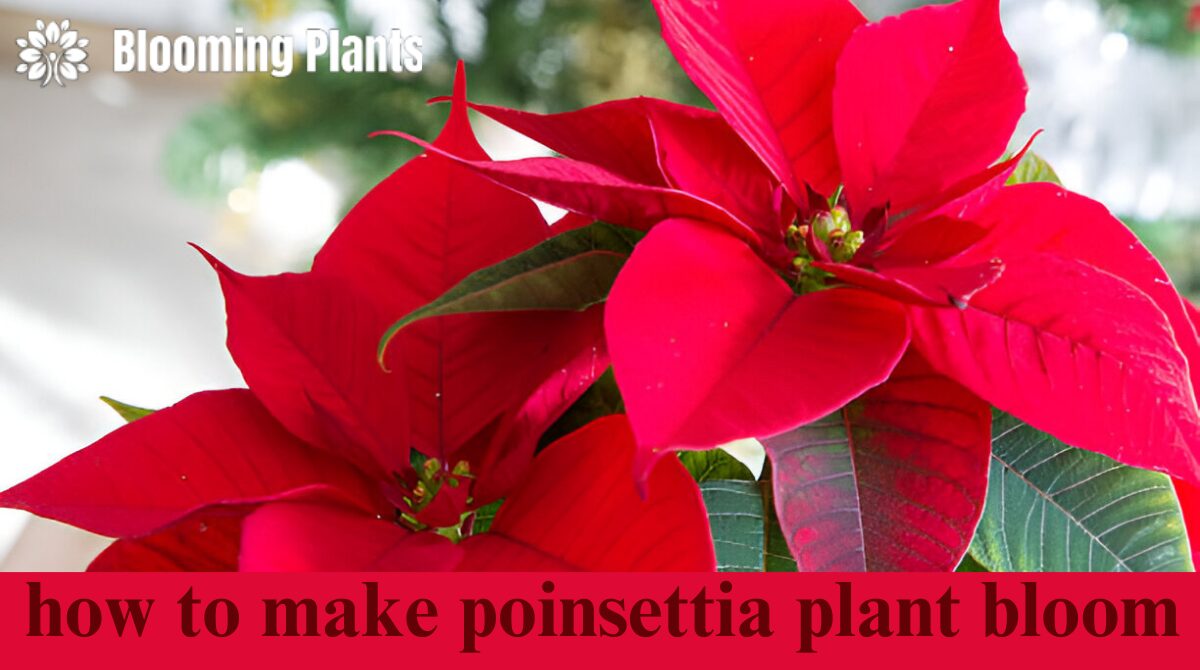Poinsettias are synonymous with the holiday season, their vibrant red and green colors lighting up homes across the globe. However, getting your poinsettia to bloom again after the holiday season can be a bit tricky. This guide provides an in-depth look at how to make poinsettia plants bloom, with actionable steps, expert tips, and science-backed strategies.
Poinsettias, known scientifically as Euphorbia pulcherrima, are beloved holiday plants. Their bright bracts (often mistaken for flowers) are a hallmark of Christmas decor. However, once the holidays pass, many people discard their poinsettias, assuming they won’t bloom again. With the right care, though, these plants can rebloom year after year. This guide will teach you how to nurture your poinsettia from one season to the next, ensuring those iconic red bracts return just in time for the holidays.
Understanding Poinsettias: What Makes Them Bloom?
Poinsettias don’t bloom in the traditional sense. Their colorful “flowers” are modified leaves called bracts. The actual flowers are the tiny yellow buds at the center of the bracts. Here’s what triggers their bloom:
- Photoperiodism: Poinsettias are short-day plants, meaning they require extended periods of darkness to produce bracts.
- Temperature Sensitivity: Optimal blooming occurs when temperatures stay between 60-70°F (15-21°C).
- Healthy Growth Cycle: A poinsettia must be well-nurtured during its dormant and active growth stages.
How to Prepare Your Poinsettia for Reblooming
Before you can get your poinsettia to bloom, it needs to recover from the holidays and enter a dormant phase. Here’s what to do:
1. Post-Holiday Care
- Trim the Plant: Once the bracts fade, prune the plant back to 6-8 inches. This encourages new growth.
- Relocate: Place your poinsettia in a well-lit area away from drafts and direct sunlight.
- Water Moderately: Water the plant only when the soil is dry to the touch. Overwatering can lead to root rot.
2. The Dormancy Phase
Dormancy is critical for poinsettias to conserve energy for future blooming.
- Reduce Watering: Water sparingly, allowing the soil to dry out completely between waterings.
- Cool Location: Keep the plant in a cool, dark spot (around 50-55°F or 10-13°C).
- Minimal Care: Avoid fertilizing during this time.
How to Make a Poinsettia Bloom Again
Reblooming poinsettias requires a carefully managed routine. Here’s a step-by-step guide:
1. Start with Proper Lighting
Poinsettias are photoperiodic, meaning their blooming cycle is triggered by light and darkness. To ensure they bloom:
- Control Light Exposure: Beginning in late September or early October, provide 14-16 hours of complete darkness daily. Use a box, blackout curtains, or a closet to block out light.
- Daylight Hours: During the day, place the plant in a bright, indirect light spot for 6-8 hours.
2. Maintain the Right Temperature
Temperature is critical for poinsettias to thrive.
- Ideal Range: Keep the temperature between 60-70°F (15-21°C).
- Avoid Fluctuations: Don’t place the plant near drafts, heaters, or air conditioners.
3. Fertilize Regularly
Feed your poinsettia every two weeks with a balanced, water-soluble fertilizer (10-10-10 or 20-20-20). This promotes healthy growth and vibrant bracts.
Common Mistakes to Avoid
Many people struggle to rebloom poinsettias because of common pitfalls. Avoid these mistakes:
- Overwatering: This is the most common cause of poinsettia death. Water only when the soil feels dry.
- Inconsistent Lighting: Missing the 14-hour dark periods can delay or prevent blooming.
- Extreme Temperatures: Both hot and cold extremes can stress the plant.
The Science Behind Poinsettia Blooming
Understanding the plant’s biological process can help you succeed:
| Factor | Why It Matters |
| Photoperiodism | Signals the plant to produce colorful bracts. |
| Chlorophyll Cycle | Helps maintain vibrant green leaves during the growing phase. |
| Dormancy Period | Conserves energy and preps the plant for blooming. |
Real-Life Case Study: A Poinsettia Success Story
Take the case of Sarah, a home gardener in Michigan. She followed a strict light-dark schedule for her poinsettia and managed to get it to bloom beautifully for three consecutive years. Here’s what worked for her:
- She placed her plant in a dark closet from 5 PM to 8 AM daily.
- Fertilized bi-weekly with organic compost tea.
- Kept temperatures stable with a humidifier during dry winter months.
Her dedication paid off, and her poinsettia became the centerpiece of her holiday decor.
FAQs About Poinsettia Blooming
- Why isn’t my poinsettia blooming?
Poinsettias need consistent darkness and cool temperatures. Even small interruptions in their dark periods can prevent blooming. - Can I use artificial light for poinsettias?
Yes! Grow lights that mimic daylight can be helpful during the active growing phase. - How long does it take for a poinsettia to bloom?
Typically, poinsettias require 8-10 weeks of short days to bloom.
Conclusion
Making a poinsettia bloom is a rewarding process that requires patience and attention to detail. By understanding their growth cycle and following a strict routine, you can enjoy vibrant poinsettia blooms year after year. Whether you’re a seasoned gardener or a beginner, this guide will help you bring the beauty of poinsettias back into your home.

